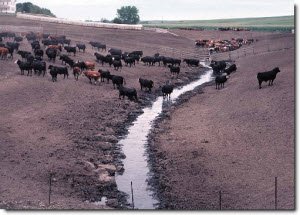(source: http://www.ddcwsa.com/wp-content/uploads/2014/07/dailywaterusechart1.jpg)
Water borne diseases in malaysia
• 2600 cases of gastroenteritis in Seremban (1982)
• 81 cases of infectious hepatitis in Raub (1987)
• 940 cases of infectious hepatitis in Kota Belud (1988)
• 300 cases of typoid fever in Johor Bahru (1990)
• 1278 cases of cholera in Penang (May 1996)
Basic component of a water supply system
Water resources ~> Treatment facilities~> water moving mechanism~>system distribution.
Water Resources in Malaysia
>In Malaysia, water resources are State matters under the Federal Constitution and policies on management, regulation and development fall under the jurisdiction of the states
>Various Federal and State agencies are responsible for water resources development and management – mainly water supply, irrigation and hydropower generation
>In Peninsular Malaysia, the total water resources are dominated by the amount of water that flows in surface streams after rainfall
>The source of all water is rainfall, with heavy rainfall during the monsoon seasons.
(Source:http://images.slideplayer.com/16/5175607/slides/slide_21.jpg)
Water Quality Monitaring
- Monitoring of river water quality in Malaysia by the Department of Environment (DOE) started in 1978
>initially to establish water quality baseline and subsequently to detect water quality changes and identify pollution sources.
Water quality index (WQI)
>River water quality appraisal is based on the Water Quality Index (WQI)
~ Dissolved Oxygen (DO)
~ Biochemical Oxygen Demand (BOD)
~ Chemical Oxygen Demand (COD)
~ Ammoniacal Nitrogen (AN)
~ Suspended Solids (SS)
~ pH
>The WQI serves as a basis for environmental assessment of a watercourse in relation to pollution categorization and designated classes of beneficial uses.
Water treatment plant
Water treatment plant are designed to remove sediment and inject chemicals.
(source:http://cof-cof.ca/wp-content/uploads/2012/03/Surface-Water-Treatment-Plant.gif)
Moving the water
Three primary methods of moving water throughout the water supply system
- Gravity
- Direct pumping
- Combination
Water Issues&Problems
Drought
- The cause of drought – climate changes
- it threatens public health and safety
- There is a need to conserve over the long term to prepare for the uncertainty.
Pipe failures- Malaysia’s non-revenue water is currently 39%.
• 26% lost via damaged water pipes
• 6% through inaccurate meter reading
• 5% was stolen
• 2% was due to other reasons.
Pipe failures are an increasing problem as pipelines age and reach critical levels of predictable.
Water Quality issues
>The effect of urbanisation/increase in population activities change the quality of runoff within a catchment and its receiving waters
>Sedimentation of rivers from land development & clearing degrade water quality and affect the natural channel
>Rainfall washes contaminants into the storm water system whereby they are transported to receiving waters.
Legislation Issues
>The lack of effective legislation, institutional arrangements and human resources for the monitoring and control of pollution and the absence of effective cost-recovery systems at the local or national level.
Water-borne diseases
>Pathogens in water that can cause illness to human or animal.
>Poor sanitation and water supply.
Water Pollution
>The water which has contains and condition changed, not suitable to use
>Any chemical, physical or biological change in the quality of water that has a harmful effect on any living thing that drinks or uses or lives (in) it.
Water Quality Parameters
(Source:http://image.slidesharecdn.com/coolingwatertreatment-150828121308-lva1-app6891/95/cooling-water-treatment-4-638.jpg?cb=1440764189)
(source:http://image.slidesharecdn.com/water-pollution-and-treatment-1234887888240184-1/95/water-pollution-and-treatment-4-728.jpg?cb=1234866315)
There are two sources of pollution
1.Point source.
Point sources discharge pollutants at specific locations (direct) through pipelines or sewers into the surface water.
Example:factories, sewage treatment plants, underground mines, oil wells, oil tankers and agriculture.
2.Non point source.
Non-point sources are sources that cannot be traced (indirect) to a single site of discharge
Example:acid deposition from the air, traffic, pollutants that are spread through rivers and pollutants that enter the water through groundwater.
*Non-point pollution is hard to control because the perpetrators cannot be traced*
(source:http://oceanservice.noaa.gov/education/kits/pollution/media/pol04a_460.jpg)
There are three major sources
Domestic
Agricultural
Industrial
Domestic
>Wastewater generated from the household activities
>It contains organic and inorganic materials such as phosphates and nitrates.
>Organic materials are food and vegetable waste, whereas inorganic materials come from soaps and detergents.

(source:https://usercontent1.hubstatic.com/6791840_f520.jpg)
Industrial Pollutants
>Caused by the discharged of industrial effluents
>The industrial effluents contain organic pollutants and other toxic chemicals
>Some of the pollutants from industrial source include lead, mercury, asbestos, nitrates, phosphates, oils, etc.
(source:http://www.crwater.com/wp-content/uploads/CWA1.png)
Agricultural Pollutants
Caused by agricultural wastes
Example: • Fertilizers • Pesticides • Soil additives • Antibiotics/drugs • Animal wastes
(source:http://d2ouvy59p0dg6k.cloudfront.net/img/pesticides_39194_363774.jpg)

(source:https://www.epa.gov/sites/production/files/styles/large/public/2013-06/cows_web.jpg)
Drinking water legislation
>Drinking water should be free from any pathogen, virus or fine particles which can cause a disease or bad effect to human bodies
>WHO’s Guideline for Drinking Water Quality
>Malaysia National Standard for Drinking Water Quality.
Reference
(All these notes based on my lecturer's note, Sir Mohd Jamalil Azam bin Mustafa)
No comments:
Post a Comment